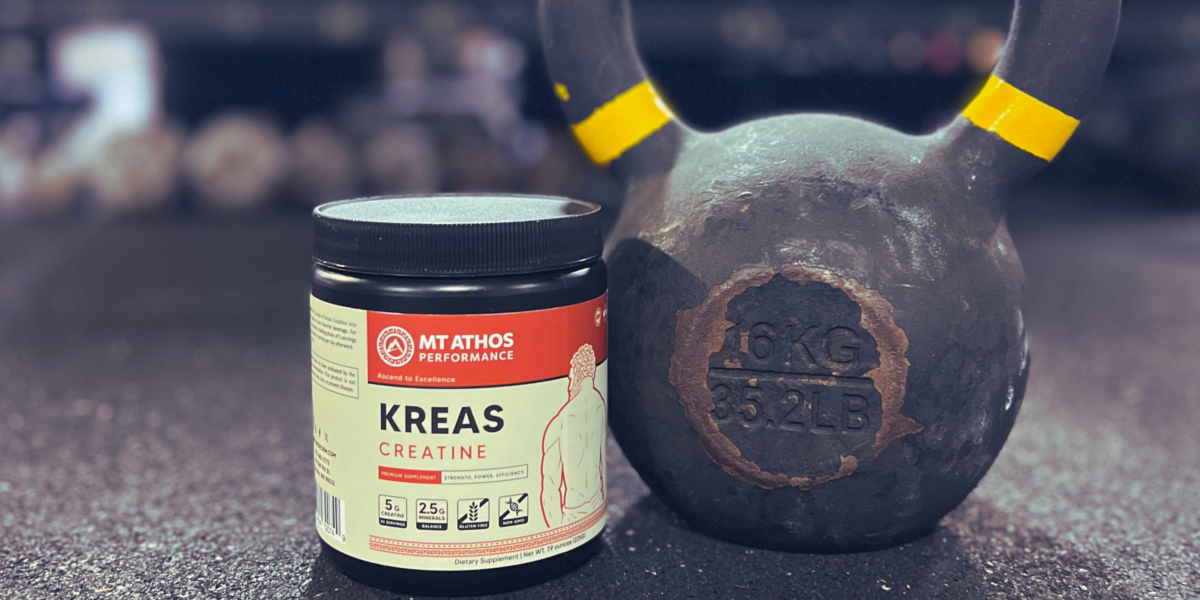Gym bros, weightlifters, and body builders step aside. Creatine is for everyone!
What do caffeine and creatine have in common? They’re the two most studied supplements. And according to Dr. Darren Candow, a leading researcher on creatine, it’s the “safest, most effective dietary supplement on the planet.” And that includes women. In fact, there’s been a huge uptick in studies on the benefits of creatine for women, and the findings are exciting.

What is creatine?
There are many different types of creatine, but Creatine Monohydrate is what you want because it’s the same as what our bodies naturally synthesize. The other types have not shown to have any advantages over Creatine Monohydrate.
Our bodies synthesize (make) creatine in the liver, pancreas, and kidneys, and store it mostly in our muscles. Plus, we get it in our diet. However, we can benefit from getting more than that.
Red meat, poultry, and fish have the highest levels of creatine. For example, 1 pound of raw beef provides about 1-2 grams of creatine. Supplementing creatine is especially important if you’re a vegetarian or don’t eat much meat. But as I will explain, some of the lesser-known benefits of creatine are enhanced with a higher dosing of 7-10 grams.
Creatine is a compound that comes from three amino acids: L-arginine, Glycine, and L-methionine.
“Creatine is the safest, most effective dietary supplement on the planet.”
-Dr. Darren Candow
Creatine is osmotic, meaning it helps bring water through the cell membrane into our cells. This helps our muscles recover from the damage exercise causes to them.
It’s also responsible for increasing the phosphocreatine stores in our muscles during high intensity exercise. This is important because phosphocreatine contributes to the maintenance and recycling of ATP for muscle contractions. In short, creatine is used for energy in our bodies. Sufficient creatine allows us to think and move well.
In more current research, creatine is shown to have a positive impact on bone and brain health. 5% of our body’s creatine is stored in the bones and brain.
Creatine, Muscles, and More
“A growing body of research shows
Many women shy away from it, though, because creatine has been a “guy’s” supplement for so long. Many women are also afraid of becoming big and bulky. But a small daily dose (3-5 grams) has virtually no negative effects, and lots of positives for women and men alike.
As I mentioned before, creatine is stored primarily in the skeletal muscles as phosphocreatine. It supports building muscle mass, can improve endurance, and can enable you train more intensely for longer. The delayed onset of muscle burning and fatigue happens because the phosphocreatine buffers the hydrogen ions that accumulate during high intensity workouts and are responsible for muscle burn and fatigue.
Being able to work out more intensely means greater overall fitness benefits.

Women typically have a 15% increase in exercise performance with creatine supplementation, while men have about 6%.
According to research, supplemental creatine is most effective for short-duration, high intensity exercise (like maximal lifting efforts and sprints) and high intensity intervals with short rest periods. This is the type of training women should be doing anyway! (More on that in another blog.)
Creatine plus exercise is a match made in heaven. Taking creatine will likely do nothing for bone and muscle health if you don’t exercise. You don’t need to be an elite level athlete to see the muscular and endurance benefits. Walking and basic resistance training will do the trick.
“Exercise unlocks the magic of creatine.”
-Dr. Darren Candow
Even if you don’t work out…
Creatine is a promising supplement for those of us who are metabolically stressed as well. If you’re sleep deprived, doing shift work, injured, or training at high levels, creatine can really help.
Dosage and Timing
According to Dr. Candow, there are 3 strategies for determining your dosage:
-
- Loading – Take 20 grams a day for 7 days to fully saturate your muscles. This is a good approach if you have an athletic event coming up. This is not a good approach if you don’t want to experience a “bloating” sensation.
-
- Daily Muscle Benefit – take 3-5 grams a day every day.
-
- Daily Bone and Brain Benefit – Take 7-10 grams a day every day.
As you can see, it takes a higher dosage to impact bone and brain health. However, creatine works over time. It builds up slowly in your system and eventually will cross the blood-brain barrier. So even at a lower dose, you can still experience bone and “above the neck” benefits. It will just take longer.
It takes 2-4 weeks to see muscle benefits at the low dose of 3-5 grams a day.
The most important thing about timing is making sure you get it daily. However, taking it around the time of exercise (before, during, or after) can accelerate the creatine getting into the muscle faster.
“There is a ton of data to support that creatine can help improve strength, muscularity, and performance, but it’s also emerged as a very promising supplement for long-term brain health and capacity. Whether it’s neurological diseases like Parkinson’s, traumatic brain injury, depression, acute cognitive capacity, creatine shows alot of promise and the body of evidence to support it’s efficacy only seems to be growing.”
-Danny Mantranga, CSCS, BSc.
A final benefit
Not only is creatine safe and effective. It’s also cheap! A quality product will cost 40 – 85 cents per serving.
With the wide array of supplements available, hopefully this helped you to understand creatine. It’s for every body. It’s for you too!






Share:
Combat the Chair: Undo the Damage Caused by Sitting All Day